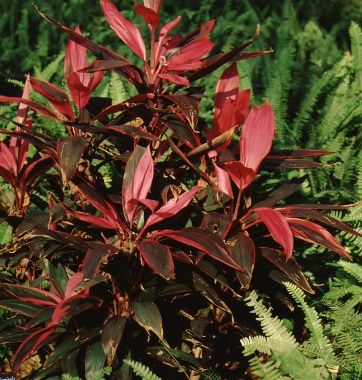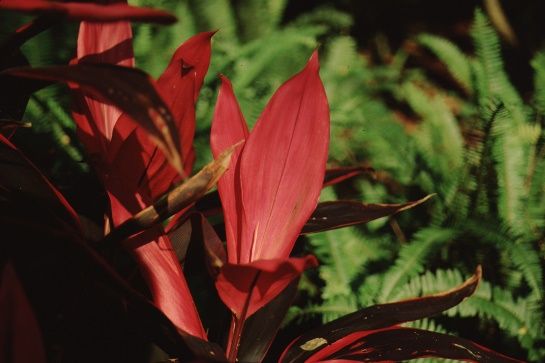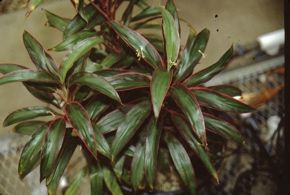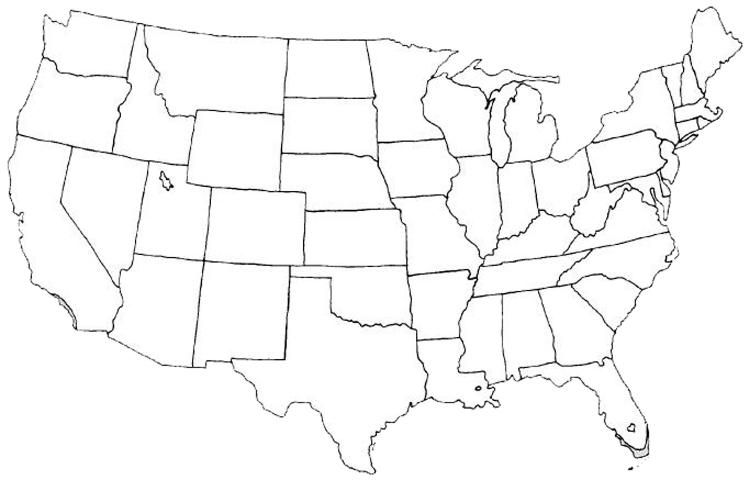Introduction
The colorful ti plant is perfect for creating a tropical landscape effect, with its smooth, flexible leaves ranging in color from variegated light greens and pinks to very dark reds. Performing well in full sun or partial to deep shade, ti plant needs fertile, well-drained soil and can tolerate only brief periods of drought. Leaf coloration is more pronounced in sunnier locations.

Credit: Edward F. Gilman, UF/IFAS

Credit: Edward F. Gilman, UF/IFAS

Credit: Edward F. Gilman, UF/IFAS
General Information
Scientific name: Cordyline terminalis
Pronunciation: kor-dil-LYE-nee tur-min-NAY-liss
Common name(s): ti plant
Family: Agavaceae
Plant type: shrub
USDA hardiness zones: 10B through 11 (Figure 4)
Planting month for zone 10 and 11: year round
Origin: not native to North America
Invasive potential: not known to be invasive
Uses: specimen; container or above-ground planter; suitable for growing indoors; accent; mass planting
Availability: generally available in many areas within its hardiness range

Credit:
Description
Height: 3 to 10 feet
Spread: 2 to 4 feet
Plant habit: upright
Plant density: open
Growth rate: moderate
Texture: medium
Foliage
Leaf arrangement: spiral
Leaf type: simple
Leaf margin: entire
Leaf shape: linear
Leaf venation: parallel
Leaf type and persistence: evergreen
Leaf blade length: 8 to 18 inches; variable
Leaf color: purple or red; green
Fall color: no fall color change
Fall characteristic: not showy
Flower
Flower color: yellow
Flower characteristic: spring flowering
Fruit
Fruit shape: round
Fruit length: less than .5 inch
Fruit cover: fleshy
Fruit color: red
Fruit characteristic: inconspicuous and not showy
Trunk and Branches
Trunk/bark/branches: not particularly showy; typically multi-trunked or clumping stems
Current year stem/twig color: reddish
Current year stem/twig thickness: thick
Culture
Light requirement: plant grows in part shade/part sun
Soil tolerances: slightly alkaline; clay; sand; acidic; loam
Drought tolerance: moderate
Soil salt tolerances: poor
Plant spacing: 36 to 60 inches
Other
Roots: usually not a problem
Winter interest: no special winter interest
Outstanding plant: plant has outstanding ornamental features and could be planted more
Pest resistance: long-term health usually not affected by pests
Use and Management
It grows well as a house plant in a sunny location. It is used in outdoor landscapes as an accent, either planted alone in a small garden or in mass in a larger-sized landscape. The leaves are used in Hawaii to make dancing skirts. Plant on two to three-foot centers for massing in the landscape.
Cultivars include: 'Amabilis', glossy, dark green leaves spotted with rose and white; 'Baptisii', dark green leaves striped with pink and yellow; and 'Tricolor' with leaves marked with green, pink, and white.
Plants are easily propagated by cuttings or by sections of stem laid horizontally in a peat moss-sand mixture, and kept moist.
Pests and Diseases
While relatively easy to grow, problems include a sensitivity to nematodes, mealy bugs, mites, and fluoride damage.
Ti plant can be bothered by leaf spot diseases.